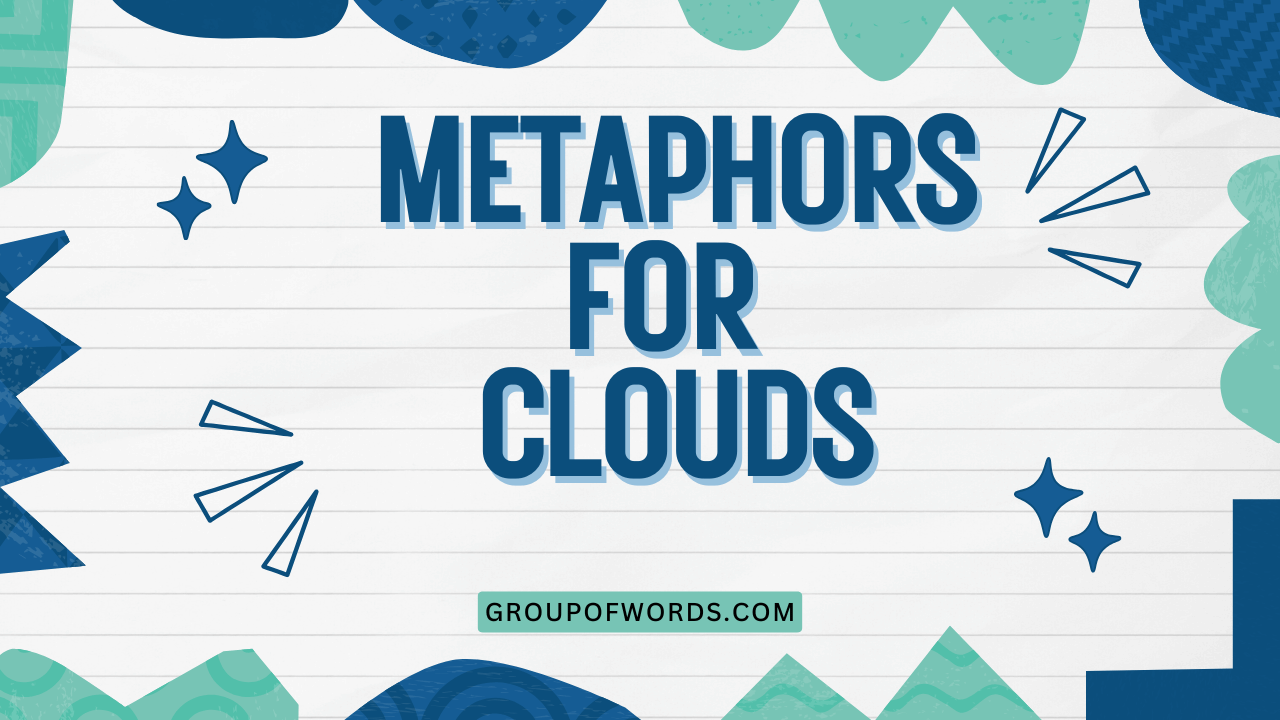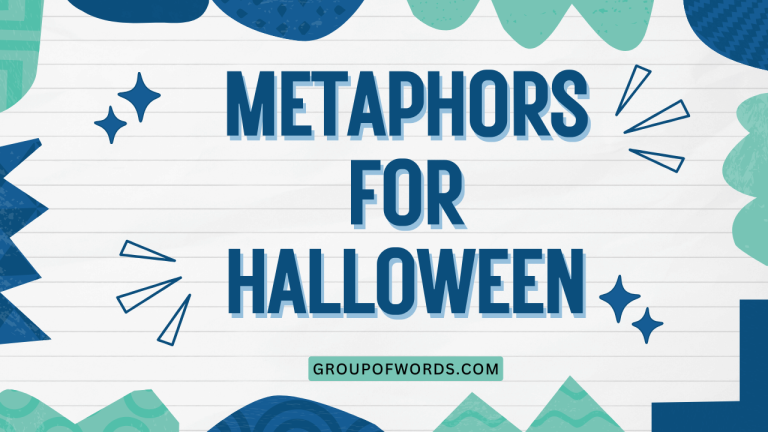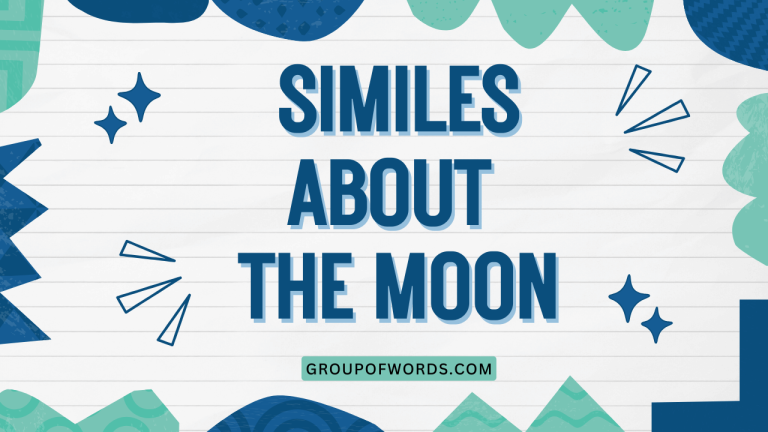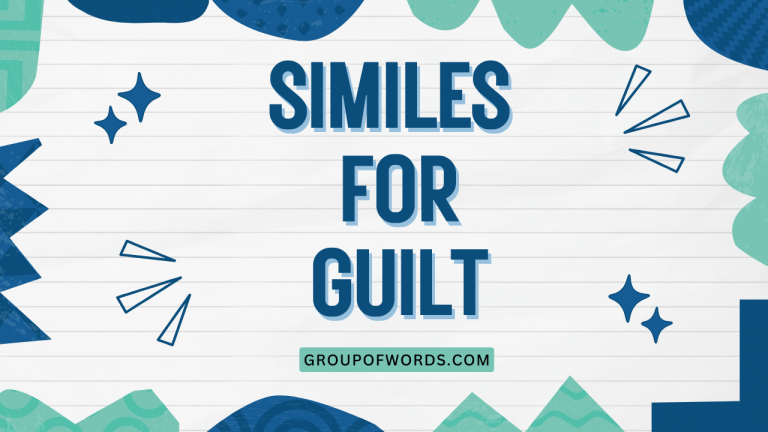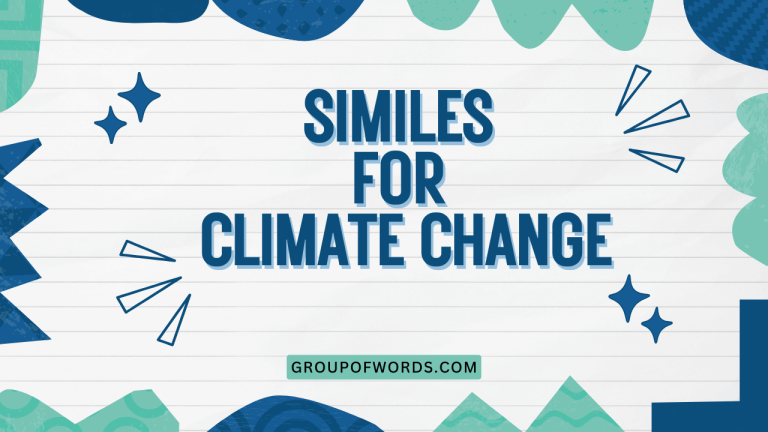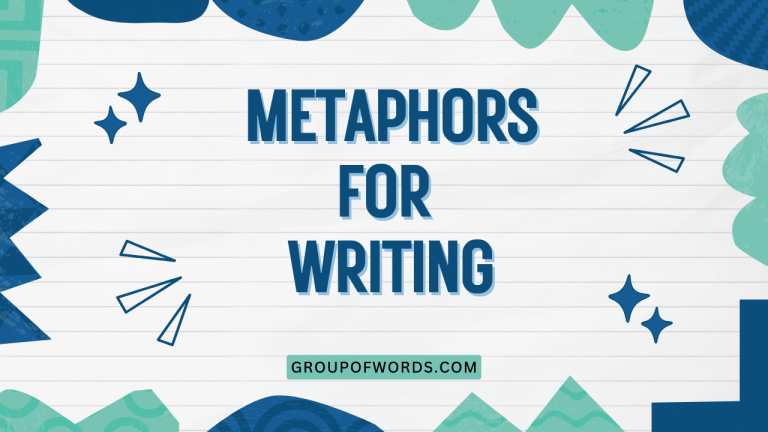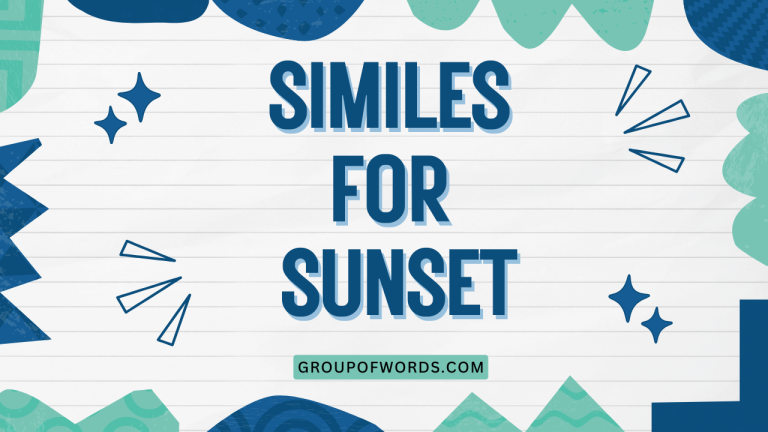Cloud Metaphors: A Guide to Figurative Language
Metaphors are powerful tools in the English language, allowing us to draw comparisons between seemingly unrelated things to create vivid imagery and deeper understanding. Using metaphors for clouds can transform simple descriptions into evocative scenes, enriching both writing and conversation.
This article delves into the art of crafting cloud metaphors, exploring various types, providing numerous examples, and offering practical exercises to help you master this skill. Whether you’re a student, writer, or language enthusiast, this guide will enhance your ability to describe the ever-changing beauty of the sky using figurative language.
Understanding how to use metaphors effectively not only improves your writing style but also sharpens your critical thinking and appreciation for the nuances of language. By exploring the diverse ways clouds can be metaphorically represented, you’ll gain a deeper understanding of both the natural world and the creative potential of the English language.
Get ready to embark on a journey through the metaphorical skies!
Table of Contents
- Introduction
- Definition of Metaphor
- Structural Breakdown of Cloud Metaphors
- Types of Cloud Metaphors
- Examples of Cloud Metaphors
- Usage Rules for Cloud Metaphors
- Common Mistakes with Cloud Metaphors
- Practice Exercises
- Advanced Topics in Cloud Metaphors
- Frequently Asked Questions
- Conclusion
Definition of Metaphor
A metaphor is a figure of speech that directly compares two unlike things without using “like” or “as.” It asserts that one thing *is* another, creating a connection based on shared characteristics or qualities. Metaphors are essential for adding depth, imagery, and emotional resonance to language. They differ from similes, which use “like” or “as” to make comparisons, in their directness and implied equivalence.
In the context of describing clouds, metaphors allow us to move beyond literal descriptions and evoke a sense of wonder, awe, or even foreboding. By comparing clouds to other objects, textures, colors, or emotions, we can create a richer and more engaging experience for the reader or listener.
For example, instead of simply saying “the clouds are white,” we might say “the clouds are cotton balls scattered across the blue canvas,” instantly creating a more vivid image.
Metaphors function by transferring qualities from one entity (the source) to another (the target). In the case of cloud metaphors, the clouds are the target, and the source can be anything from animals to emotions to inanimate objects.
The effectiveness of a metaphor depends on the strength and relevance of the shared qualities between the source and the target. A well-crafted metaphor can reveal hidden similarities and offer new perspectives on familiar subjects.
Structural Breakdown of Cloud Metaphors
The structure of a cloud metaphor typically involves identifying a key characteristic of a cloud (e.g., its shape, color, texture, or movement) and then finding an object, concept, or emotion that shares a similar characteristic. The metaphor then asserts that the cloud *is* that object, concept, or emotion.
Consider the metaphor “The clouds are fluffy sheep grazing in the sky.” Here’s a breakdown:
- Target: Clouds
- Source: Fluffy Sheep
- Shared Characteristic: Appearance of soft, white, rounded forms.
- Assertion: The clouds *are* fluffy sheep.
The strength of this metaphor lies in the reader’s ability to visualize both fluffy sheep and clouds and to recognize the similarity in their appearance. A successful cloud metaphor effectively bridges the gap between the abstract (clouds) and the concrete (sheep), making the description more relatable and memorable.
Another example is “The clouds are angry fists clenched against the horizon.” In this case:
- Target: Clouds
- Source: Angry Fists
- Shared Characteristic: Appearance of dark, threatening, and tightly formed shapes.
- Assertion: The clouds *are* angry fists.
This metaphor utilizes the emotional association of “angry fists” to convey the menacing nature of the clouds, creating a sense of tension and anticipation.
Types of Cloud Metaphors
Cloud metaphors can be categorized based on the specific characteristic of the cloud being emphasized. Here are some common types:
Shape Metaphors
Shape metaphors focus on the physical form of the clouds. These metaphors often compare clouds to animals, objects, or other recognizable shapes.
Texture Metaphors
Texture metaphors emphasize the tactile qualities of clouds, such as their softness, smoothness, or roughness. These metaphors often use words like “cotton,” “velvet,” or “stone” to evoke a sense of touch.
Color Metaphors
Color metaphors highlight the hues and shades of the clouds. These metaphors often compare clouds to precious metals, gemstones, or other colorful objects.
Movement Metaphors
Movement metaphors focus on how the clouds move across the sky. These metaphors often compare clouds to ships, dancers, or other dynamic entities.
Emotional Metaphors
Emotional metaphors attribute human emotions to clouds, creating a sense of mood or atmosphere. These metaphors often use words like “angry,” “sad,” or “joyful” to personify the clouds.
Examples of Cloud Metaphors
Here are some examples of cloud metaphors, organized by category:
Shape Metaphor Examples
Shape metaphors bring clouds to life by comparing them to familiar forms. The table below provides a variety of examples showcasing how different cloud shapes can be described metaphorically.
These metaphors enhance descriptions by creating vivid imagery and relatable comparisons.
| Metaphor | Explanation |
|---|---|
| The clouds were fluffy sheep grazing in the endless blue pasture. | Clouds resemble the soft, woolly appearance of sheep in a field. |
| Clouds are majestic galleons sailing across the celestial sea. | Clouds evoke the image of large, impressive sailing ships. |
| The clouds morphed into giant cotton candy castles in the sky. | Clouds resemble the sweet, fluffy structures of cotton candy. |
| Clouds resembled a herd of slumbering whales floating gently. | The clouds appear as large, peaceful whales resting in the sky. |
| The sky was filled with cloud dragons breathing wisps of vapor. | Clouds take on the mythical form of dragons exhaling smoke. |
| Clouds drifted like scattered puzzle pieces, never quite fitting. | Clouds are portrayed as fragmented, incomplete shapes. |
| The clouds massed like ghostly mountains on the horizon. | Clouds resemble the imposing form of distant mountains. |
| The clouds were like brushstrokes of white paint on a blue canvas. | Clouds are seen as artistic elements in a painting. |
| Clouds formed into the shape of a giant, celestial anvil. | Clouds take on the distinct form of a blacksmith’s anvil. |
| The clouds resembled a tapestry of interwoven cotton threads. | Clouds are likened to a complex, textured fabric. |
| Clouds gathered like a parliament of owls observing the world below. | Clouds are personified as wise, watchful owls. |
| The clouds looked like crumpled paper tossed carelessly aside. | Clouds are portrayed as discarded, misshapen objects. |
| Clouds resembled a string of pearls scattered across the sky. | Clouds are seen as elegant, precious gems. |
| The clouds formed into the shape of a colossal, floating brain. | Clouds take on the intriguing form of a human brain. |
| Clouds drifted like dandelion seeds carried on the wind. | Clouds are compared to light, airy seeds floating freely. |
| The clouds looked like a fleet of icebergs drifting in a blue ocean. | Clouds are portrayed as large chunks of ice floating serenely. |
| Clouds resembled a collection of sea shells scattered on a beach. | Clouds are seen as diverse, natural formations. |
| The clouds took on the shape of enormous, spectral mushrooms. | Clouds are likened to large, ethereal fungi. |
| Clouds appeared as torn sails of a ghostly ship. | Clouds resemble damaged fabric from a ship lost at sea. |
| The clouds resembled a gathering of celestial marshmallows. | Clouds are compared to soft, sweet treats. |
| Clouds looked like abstract sculptures carved from the sky. | Clouds are portrayed as artistic and complex formations. |
| The clouds formed the shape of a gigantic, ethereal bird in flight. | Clouds take on the majestic form of a bird soaring. |
| Clouds resembled a collection of fluffy, white continents. | Clouds are seen as expansive, land-like formations. |
| The clouds drifted like enormous lily pads on a blue pond. | Clouds are compared to large, floating plant structures. |
Texture Metaphor Examples
Texture metaphors add a sensory dimension to cloud descriptions by focusing on how they feel. The following table presents examples that use tactile comparisons to describe the texture of clouds, creating a more immersive and engaging experience for the reader.
| Metaphor | Explanation |
|---|---|
| The clouds were like soft, velvety cushions in the sky. | Clouds evoke a feeling of smoothness and softness. |
| The clouds were like rough, granite cliffs towering above. | Clouds evoke a sense of ruggedness and solidity. |
| The clouds were like delicate, silken scarves draped across the heavens. | Clouds evoke a feeling of lightness and elegance. |
| The clouds felt like coarse, woolly blankets overhead. | Clouds evoke a feeling of warmth and heaviness. |
| The clouds were like spun sugar, dissolving into the blue. | Clouds evoke a sense of fragility and sweetness. |
| Clouds were like fields of freshly fallen snow, pristine and untouched. | Clouds evoke a feeling of cleanliness and purity. |
| The clouds were like crumpled linen, textured and uneven. | Clouds evoke a sense of subtle complexity and imperfection. |
| The clouds were like coarse sandpaper, grating against the sky. | Clouds evoke a feeling of harshness and abrasion. |
| The clouds were like plush, velvet curtains drawn across the day. | Clouds evoke a sense of luxury and enclosure. |
| The clouds were like stiff, starched fabric, unyielding and firm. | Clouds evoke a feeling of rigidity and control. |
| The clouds were like fine, powdery dust suspended in the air. | Clouds evoke a sense of lightness and dispersion. |
| The clouds were like heavy, leaden weights pressing down on the earth. | Clouds evoke a feeling of oppression and burden. |
| The clouds were like smooth, polished marble, cool and serene. | Clouds evoke a sense of elegance and tranquility. |
| The clouds were like rough burlap sacks, filled with unseen treasures. | Clouds evoke a sense of rustic charm and hidden potential. |
| The clouds were like fluffy down feathers, drifting gently on the breeze. | Clouds evoke a feeling of lightness and comfort. |
| The clouds felt like cold, damp sponges overhead, ready to release their moisture. | Clouds evoke a sense of impending rain and saturation. |
| The clouds were like crisp, parchment paper, etched with stories untold. | Clouds evoke a feeling of history and mystery. |
| The clouds were like coarse, volcanic rock, dark and imposing. | Clouds evoke a sense of power and geological force. |
| The clouds were like soft, worn leather, comfortable and familiar. | Clouds evoke a feeling of warmth and reassurance. |
| The clouds were like smooth, river stones, polished by time and weather. | Clouds evoke a sense of natural beauty and resilience. |
| The clouds felt like a thick, woolly mammoth hide stretched across the sky. | Clouds evoke a sense of antiquity and primal protection. |
| The clouds were like layers of crinkled cellophane, reflecting the light. | Clouds evoke a sense of artificial beauty and shimmering quality. |
| The clouds were like the gritty texture of desert sand, vast and endless. | Clouds evoke a sense of aridity and expansive space. |
| The clouds were like a dense, fog-laden swamp, mysterious and enveloping. | Clouds evoke a sense of obscurity and immersive atmosphere. |
Color Metaphor Examples
Color metaphors enrich cloud descriptions by drawing parallels between cloud hues and other colorful elements. The table below offers examples of how color comparisons can enhance the visual impact and emotional resonance of cloud depictions.
| Metaphor | Explanation |
|---|---|
| The clouds were like molten gold, ablaze with the setting sun. | Clouds evoke the radiant, fiery color of gold. |
| The clouds were like bruised plums, dark and foreboding. | Clouds evoke a sense of darkness and impending trouble. |
| The clouds were like silver linings, promising hope after the storm. | Clouds evoke a feeling of optimism and resilience. |
| The clouds were like emerald jewels scattered across the sky. | Clouds evoke a sense of preciousness and beauty. |
| The clouds were like ruby droplets, staining the horizon red. | Clouds evoke a sense of passion and intensity. |
| The clouds were like sapphire pools, reflecting the deep blue sea. | Clouds evoke a feeling of tranquility and depth. |
| The clouds were like amethyst crystals, shimmering with violet light. | Clouds evoke a sense of spirituality and enchantment. |
| The clouds were like onyx shadows, cloaking the world in darkness. | Clouds evoke a sense of mystery and concealment. |
| The clouds were like coral reefs, teeming with hidden colors. | Clouds evoke a sense of vibrant, underwater life. |
| The clouds were like parchment scrolls, faded and aged with time. | Clouds evoke a feeling of history and wisdom. |
| The clouds were like turquoise stones, vibrant against the clear sky. | Clouds evoke a sense of clarity and exotic beauty. |
| The clouds were like bronze statues, solid and imposing. | Clouds evoke a sense of strength and permanence. |
| The clouds were like pearl necklaces, elegant and refined. | Clouds evoke a sense of sophistication and grace. |
| The clouds were like charcoal sketches, stark and dramatic. | Clouds evoke a sense of artistic simplicity and contrast. |
| The clouds were like jade carvings, smooth and serene. | Clouds evoke a feeling of tranquility and natural beauty. |
| The clouds were like saffron threads, adding warmth to the day. | Clouds evoke a sense of spice and comfort. |
| The clouds were like cobalt dyes, staining the sky with their hue. | Clouds evoke a sense of intensity and artistic expression. |
| The clouds were like garnet embers, glowing with inner fire. | Clouds evoke a sense of warmth and hidden energy. |
| The clouds were like alabaster sculptures, pure and pristine. | Clouds evoke a sense of elegance and simplicity. |
| The clouds were like sepia photographs, nostalgic and faded. | Clouds evoke a feeling of history and wistful memories. |
| The clouds felt like a kaleidoscope of colors, ever-shifting and mesmerizing. | Clouds evoke a sense of dynamic beauty and visual complexity. |
| The clouds were like a canvas of oil paints, rich and textured. | Clouds evoke a sense of artistic depth and vibrant color. |
| The clouds were like a spectrum of rainbows, arching across the sky. | Clouds evoke a sense of hope and magical beauty. |
| The clouds were like a mosaic of stained glass, intricate and luminous. | Clouds evoke a sense of artistic craftsmanship and radiant light. |
Movement Metaphor Examples
Movement metaphors capture the dynamic nature of clouds by comparing their motion to other moving entities. The table below provides examples that illustrate how movement comparisons can make cloud descriptions more vivid and engaging.
| Metaphor | Explanation |
|---|---|
| The clouds drifted like sailboats on a tranquil sea. | Clouds evoke the gentle, gliding motion of sailboats. |
| The clouds raced like wild horses across the open sky. | Clouds evoke a sense of speed and untamed energy. |
| The clouds danced like ballerinas in a celestial ballet. | Clouds evoke a feeling of grace and coordinated movement. |
| The clouds crawled like snails across the vast expanse. | Clouds evoke a sense of slowness and deliberate motion. |
| The clouds swirled like eddies in a cosmic stream. | Clouds evoke a feeling of circular, flowing movement. |
| The clouds pulsed like heartbeats in the rhythm of the sky. | Clouds evoke a sense of life and organic movement. |
| The clouds scattered like dandelion seeds in the wind. | Clouds evoke a feeling of dispersion and lightness. |
| The clouds marched like soldiers across the horizon. | Clouds evoke a sense of order and purposeful movement. |
| The clouds billowed like curtains in a gentle breeze. | Clouds evoke a feeling of soft, flowing movement. |
| The clouds soared like eagles, riding the currents of the air. | Clouds evoke a sense of freedom and effortless flight. |
| The clouds tumbled like acrobats in a gravity-defying performance. | Clouds evoke a sense of playful, unpredictable movement. |
| The clouds crept like shadows across the landscape. | Clouds evoke a sense of stealth and subtle movement. |
| The clouds cascaded like waterfalls down the mountains of the sky. | Clouds evoke a feeling of powerful, downward motion. |
| The clouds fluttered like butterflies on a summer’s day. | Clouds evoke a sense of delicate, erratic movement. |
| The clouds flowed like rivers across the celestial plain. | Clouds evoke a feeling of continuous, directional movement. |
| The clouds expanded like blooming flowers in slow motion. | Clouds evoke a sense of gradual, organic growth. |
| The clouds dissolved like sugar in warm water, fading away. | Clouds evoke a sense of disappearance and transformation. |
| The clouds gathered like dancers preparing for a grand performance. | Clouds evoke a feeling of anticipation and coordinated movement. |
| The clouds shifted like tectonic plates, reshaping the sky. | Clouds evoke a sense of powerful, geological forces. |
| The clouds rolled like ocean waves towards the shore. | Clouds evoke a feeling of rhythmic, advancing movement. |
| The clouds undulated like a snake slithering through the grass. | Clouds evoke a sense of sinuous, fluid movement. |
| The clouds spiraled like galaxies in a cosmic dance. | Clouds evoke a sense of vastness and universal movement. |
| The clouds surged like a crowd of people during a riot. | Clouds evoke a sense of chaotic, unrestrained movement. |
| The clouds hovered like hummingbirds sipping nectar from the sky. | Clouds evoke a sense of delicate, stationary movement. |
Emotional Metaphor Examples
Emotional metaphors add depth and resonance to cloud descriptions by attributing human feelings to them. The table below illustrates how emotional comparisons can create a more profound connection between the reader and the atmospheric phenomena being described.
| Metaphor | Explanation |
|---|---|
| The clouds were angry, dark fists clenched against the horizon. | Clouds evoke a feeling of rage and impending conflict. |
| The clouds were sad, weeping tears of rain upon the earth. | Clouds evoke a sense of sorrow and lament. |
| The clouds were joyful, dancing in the sunlight with carefree abandon. | Clouds evoke a feeling of happiness and freedom. |
| The clouds were anxious, fidgeting nervously in the sky. | Clouds evoke a sense of unease and restlessness. |
| The clouds were peaceful, resting serenely above the world. | Clouds evoke a feeling of tranquility and calm. |
| The clouds were lonely, drifting aimlessly in the vast emptiness. | Clouds evoke a sense of isolation and solitude. |
| The clouds were proud, towering majestically over the landscape. | Clouds evoke a feeling of grandeur and self-importance. |
| The clouds were shy, hiding their faces behind veils of mist. | Clouds evoke a sense of timidity and concealment. |
| The clouds were hopeful, promising a brighter tomorrow after the storm. | Clouds evoke a feeling of optimism and anticipation. |
| The clouds were fearful, cowering before the approaching thunder. | Clouds evoke a sense of dread and vulnerability. |
| The clouds were content, basking in the warmth of the afternoon sun. | Clouds evoke a feeling of satisfaction and comfort. |
| The clouds were restless, constantly shifting and changing shape. | Clouds evoke a sense of unease and instability. |
| The clouds were nostalgic, reminiscing about the rain that had passed. | Clouds evoke a feeling of wistful longing for the past. |
| The clouds were determined, pushing forward against the wind. | Clouds evoke a sense of resolve and perseverance. |
| The clouds were curious, peering down at the world below. | Clouds evoke a feeling of inquisitiveness and observation. |
| The clouds were exhausted, collapsing into a soft, hazy mist. | Clouds evoke a sense of fatigue and depletion. |
| The clouds were playful, chasing each other across the sky. | Clouds evoke a feeling of lightheartedness and amusement. |
| The clouds were pensive, contemplating the mysteries of the universe. | Clouds evoke a sense of thoughtful reflection and introspection. |
| The clouds were vulnerable, exposed to the harsh elements of nature. | Clouds evoke a feeling of fragility and susceptibility. |
| The clouds were resilient, enduring through storms and sunshine. | Clouds evoke a sense of strength and adaptability. |
| The clouds felt like a symphony of emotions, each one playing its part in the sky’s drama. | Clouds evoke a sense of complex and harmonious feelings. |
| The clouds were like a mirror reflecting the mood of the world below. | Clouds evoke a sense of empathy and shared feelings. |
| The clouds were like a canvas painted with the colors of human experience. | Clouds evoke a sense of creativity and emotional expression. |
| The clouds were like a silent witness to the passage of time and the unfolding of life. | Clouds evoke a sense of wisdom and historical awareness. |
Usage Rules for Cloud Metaphors
When using cloud metaphors, it’s important to consider the following rules to ensure clarity and effectiveness:
- Relevance: The comparison should be relevant and make sense in the context. The shared characteristic between the cloud and the object/concept should be clear and apparent.
- Originality: Strive for originality to avoid clichés. While common metaphors can be effective, fresh and creative comparisons will have a greater impact.
- Clarity: The metaphor should be easy to understand. Avoid overly complex or obscure comparisons that might confuse the reader.
- Consistency: Maintain consistency in your metaphorical language. Avoid mixing metaphors or shifting between different types of comparisons in a way that disrupts the flow of your writing.
- Appropriateness: Consider the tone and style of your writing. The metaphor should be appropriate for the overall mood and purpose of your piece.
For example, a metaphor comparing clouds to “shredded tires” might be technically accurate in terms of shape, but it lacks the aesthetic appeal and emotional resonance typically associated with cloud descriptions. A better metaphor might be “The clouds were like tattered flags waving in the wind,” which evokes a sense of both shape and movement in a more evocative way.
Furthermore, avoid overusing metaphors. While they can be powerful, too many metaphors can clutter your writing and distract from your message.
Use them sparingly and strategically to enhance your descriptions and create a lasting impression.
Common Mistakes with Cloud Metaphors
Several common mistakes can weaken the impact of cloud metaphors. Here are some examples:
- Clichés: Using overused metaphors like “clouds like cotton balls” without adding a unique twist.
- Mixed Metaphors: Combining unrelated metaphors that create a confusing image (e.g., “The clouds were a fiery dragon sailing on a velvet sea”).
- Inappropriate Comparisons: Choosing metaphors that don’t fit the context or tone (e.g., describing fluffy, white clouds as “angry demons”).
- Lack of Clarity: Using metaphors that are too abstract or obscure for the reader to understand.
- Overuse: Relying too heavily on metaphors, which can make the writing feel forced and unnatural.
Here’s a table illustrating common mistakes with cloud metaphors:
| Incorrect | Correct | Explanation |
|---|---|---|
| The clouds were like cotton balls. | The clouds were like freshly picked cotton, piled high in the sky. | Avoid clichés by adding unique details and imagery. |
| The clouds were a raging inferno of tranquility. | The clouds were a brooding storm, a dark canvas of nature’s wrath. | Avoid mixing contradictory concepts in one metaphor. |
| The clouds were like rotting garbage. | The clouds were like dark, heavy blankets, smothering the sun. | Ensure the metaphor is appropriate for the desired tone and imagery. |
| The clouds were a quantum entanglement of existential angst. | The clouds were a swirling vortex of gray, mirroring the turmoil within. | Use clear and accessible language in your metaphors. |
| The clouds were like ships, and the wind was a conductor, and the sky was a stage. The clouds were also like dreams, and… | The clouds were like ships sailing across the vast, blue ocean of the sky. | Avoid overuse by focusing on one strong, impactful metaphor. |
Practice Exercises
Test your knowledge of cloud metaphors with these exercises:
- Exercise 1: Identify the Type of Metaphor
| Metaphor | Type (Shape, Texture, Color, Movement, Emotional) |
|---|---|
| The clouds were angry fists clenched against the horizon. | |
| The clouds were fluffy sheep grazing in the sky. | |
| The clouds drifted like sailboats on a tranquil sea. | |
| The clouds were molten gold, ablaze with the setting sun. | |
| The clouds were soft, velvety cushions in the sky. | |
| The clouds were lonely, drifting aimlessly in the vast emptiness. | |
| The clouds resembled a kaleidoscope of colors, ever-shifting and mesmerizing. | |
| The clouds crawled like snails across the vast expanse. | |
| The clouds were stiff, starched fabric, unyielding and firm. | |
| The clouds massed like ghostly mountains on the horizon. |
Answers:
| Metaphor | Type |
|---|---|
| The clouds were angry fists clenched against the horizon. | Emotional |
| The clouds were fluffy sheep grazing in the sky. | Shape |
| The clouds drifted like sailboats on a tranquil sea. | Movement |
| The clouds were molten gold, ablaze with the setting sun. | Color |
| The clouds were soft, velvety cushions in the sky. | Texture |
| The clouds were lonely, drifting aimlessly in the vast emptiness. | Emotional |
| The clouds resembled a kaleidoscope of colors, ever-shifting and mesmerizing. | Color |
| The clouds crawled like snails across the vast expanse. | Movement |
| The clouds were stiff, starched fabric, unyielding and firm. | Texture |
| The clouds massed like ghostly mountains on the horizon. | Shape |
- Exercise 2: Complete the Metaphor
Fill in the blank to complete the cloud metaphor.
| Incomplete Metaphor | Answer |
|---|---|
| The clouds were like __________, promising hope after the storm. | |
| The clouds were like __________, reflecting the deep blue sea. | |
| The clouds were like __________, shimmering with violet light. | |
| The clouds were like __________, cloaking the world in darkness. | |
| The clouds were like __________, teeming with hidden colors. | |
| The clouds were like __________, faded and aged with time. | |
| The clouds were like __________, vibrant against the clear sky. | |
| The clouds were like __________, solid and imposing. | |
| The clouds were like __________, elegant and refined. | |
| The clouds were like __________, |
Possible Answers:
| Incomplete Metaphor | Answer |
|---|---|
| The clouds were like __________, promising hope after the storm. | silver linings |
| The clouds were like __________, reflecting the deep blue sea. | sapphire pools |
| The clouds were like __________, shimmering with violet light. | amethyst crystals |
| The clouds were like __________, cloaking the world in darkness. | onyx shadows |
| The clouds were like __________, teeming with hidden colors. | coral reefs |
| The clouds were like __________, faded and aged with time. | parchment scrolls |
| The clouds were like __________, vibrant against the clear sky. | turquoise stones |
| The clouds were like __________, solid and imposing. | bronze statues |
| The clouds were like __________, elegant and refined. | pearl necklaces |
| The clouds were like __________, stark and dramatic. | charcoal sketches |
Advanced Topics in Cloud Metaphors
For advanced learners, consider exploring these topics:
- Extended Metaphors: Developing a single metaphor throughout an entire piece of writing.
- Subverted Metaphors: Intentionally using a metaphor in an unexpected or ironic way.
- Cultural Significance: Exploring how different cultures interpret and metaphorize clouds.
- Synesthesia: Combining different senses in your metaphors (e.g., “The clouds tasted like rain”).
Delving into these advanced topics can significantly enhance your ability to craft sophisticated and nuanced cloud metaphors, adding layers of meaning and complexity to your writing.
Frequently Asked Questions
What is the difference between a metaphor and a simile?
A metaphor directly compares two unlike things without using “like” or “as,” while a simile uses “like” or “as” to make a comparison.
Can a cloud metaphor be too abstract?
Yes, if the comparison is too obscure or difficult to understand, it can weaken the impact of the metaphor.
How can I avoid using clichés in my cloud metaphors?
Strive for originality by adding unique details and imagery to your comparisons. Think outside the box and explore less common associations.
Is it okay to use multiple metaphors in one description of clouds?
Yes, but use them sparingly and ensure they complement each other. Too many metaphors can clutter your writing and distract from your message.
How important is it to consider the context when using cloud metaphors?
It’s crucial to consider the context to ensure the metaphor is appropriate for the tone, style, and overall message of your writing.
Conclusion
Mastering the art of cloud metaphors can significantly enhance your descriptive writing and deepen your appreciation for the beauty of language. By understanding the different types of cloud metaphors, following usage rules, and avoiding common mistakes, you can create vivid and engaging descriptions that resonate with your readers.
Practice the exercises provided, explore advanced topics, and continue to experiment with different comparisons to hone your skills. The sky’s the limit when it comes to the creative potential of cloud metaphors!
